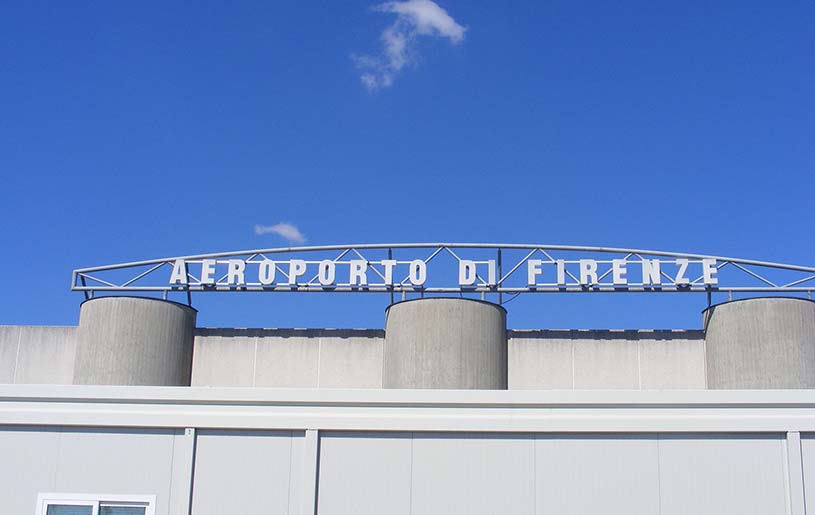Florence, known as the “Cradle of the Renaissance,” is an irresistible destination for travelers. Its enchanting streets are steeped in history, art, and culture. Navigating Florence’s labyrinthine alleys and cobblestone roads can be a daunting task, I’ve gathered valuable insights to help you discover this mesmerizing city with ease. I’ll provide tips on transportation, walking tours, cultural etiquette, and more to ensure your Florence adventure is both memorable and hassle-free.
Arriving in Florence
Before diving into the intricacies of navigating the city, let’s start with getting there.
By Air:Florence Airport, also known as Peretola Airport (FLR), is the most common gateway for international travelers. Situated a short distance from the city center, it offers convenience and ease of access. From the airport, taxis, airport shuttles, or public transportation can transport you to your accommodation.
By Train:If you’re traveling within Italy or Europe, arriving by train at Florence’s central railway station, Santa Maria Novella, is a popular choice. This station is well-connected to major cities like Rome, Venice, and Milan, making it a convenient and picturesque journey.
By Bus:Numerous long-distance bus services link Florence to other European cities. The bus station is conveniently located near the city center, granting easy access to your desired destination.
Getting Around Florence
Once you’ve arrived in Florence, it’s time to explore the city’s historic streets. Here are transportation options to help you get around seamlessly:
Strolling on Foot:Florence is eminently pedestrian-friendly, and many historic attractions are within walking distance of each other. Walking allows you to immerse yourself in the city’s charm while efficiently exploring its compact historic center.
Public Transportation:Florence boasts an efficient public transportation system, encompassing buses and trams. Tickets are available at kiosks, tobacco shops, or on board buses. The Florence Card, available for various durations, provides unlimited public transportation access, offering a cost-effective option.
Taxis:Taxis are readily available throughout Florence. You can hail one on the street or locate them at designated taxi stands. While they offer convenience, they can be costly for short journeys within the city center.
Bicycles:For those inclined to cycling, renting a bicycle is an enjoyable way to explore Florence. Dedicated bike lanes crisscross the city, and rental shops are scattered across the historic center.
Guided Walking Tours
While exploring Florence on foot is a delightful experience, guided walking tours can elevate your understanding of the city’s history and culture. Consider these popular options:
Historic Center Walking Tour
Participate in a guided tour to uncover iconic sites like the Florence Cathedral, Piazza della Signoria, and Ponte Vecchio. Knowledgeable guides provide historical context and insights into the city’s art and architecture.
Art and Museum Tours:Florence boasts world-renowned museums, including the Uffizi Gallery and the Accademia Gallery. Booking guided tours for these museums can help you skip lines and gain a deeper appreciation of the art on display.
Food and Wine Tours:Indulge in Florence’s culinary offerings with a food and wine walking tour. Sample local delicacies, visit markets, and relish authentic Tuscan cuisine along with wine pairings.

Cultural Etiquette
Respect for local customs and cultural norms is crucial when exploring Florence. Here are some tips to ensure you are a considerate visitor:
Modest Dress:When visiting churches and religious sites, dress modestly. Avoid attire that reveals too much skin and make sure to cover your shoulders and knees.
Learn Basic Italian Phrases:While many Florentines speak English, learning a few basic Italian phrases can show respect for local culture. Simple greetings and expressions of gratitude go a long way.
Greeting Etiquette:Initiate greetings with a handshake when meeting someone for the first time. Italians are known for their warmth and friendliness, so don’t hesitate to engage in conversations with locals.
Tipping:In restaurants, it’s customary to leave around 10% of the bill as a tip. In cafes and bars, rounding up the bill or leaving small change is appreciated.
Navigating the Historic Streets
Now, let’s delve into the specifics of navigating Florence’s historic streets:
Map Apps:Download a reliable map app such as Google Maps or Maps.me. These apps offer real-time navigation, public transportation information, and offline maps, which are invaluable in case you lose Wi-Fi connectivity.
Street Signs:Florence’s historic streets can be intricate, but street signs are abundant and easy to follow. Look for directional signs pointing you to major landmarks and attractions.
Landmarks as Reference Points:Use prominent landmarks like the Florence Cathedral or Palazzo Vecchio as reference points when navigating. Many streets and alleys lead to these central locations.
Follow the Arno River:The Arno River flows through the heart of Florence, serving as a natural orientation point. If you ever feel disoriented, following the river can help you find your bearings.
Familiarize with Neighborhoods:Get acquainted with Florence’s different neighborhoods, such as the Oltrarno district, Santa Croce, and Santo Spirito. Each neighborhood possesses its own unique charm and attractions.
Guided Tours with Locals:Consider joining local-led walking tours, as the guides often reveal shortcuts, hidden gems, and insider tips for navigating the city’s historic streets.
Safety and Security

While Florence is generally safe for travelers, it’s essential to remain vigilant and take precautions:
Guard Against Pickpocketing:Stay vigilant in crowded areas and tourist spots, as pickpocketing can be a concern. Use a money belt or a secure bag to protect your belongings.
Emergency Numbers:Keep emergency numbers, including local police (113) and medical services (118), in your phone. Additionally, familiarize yourself with the location of the nearest embassy or consulate.
Stick to Well-Lit Areas:When exploring at night, stick to well-lit and populated areas. Avoid dimly lit alleys and shortcuts.
Choose Reputable Accommodations:Select accommodations with positive reviews and reputable hosts to ensure a comfortable and secure stay.
Florence is a city that rewards adventurous travelers with its rich history, art, and culture. By following these tips on transportation, guided walking tours, cultural etiquette, and navigating the historic streets, you can make the most of your visit to this captivating Italian gem. Whether you’re wandering through bustling markets or admiring masterpieces in renowned museums, Florence’s historic streets will lead you to unforgettable experiences around every corner.




